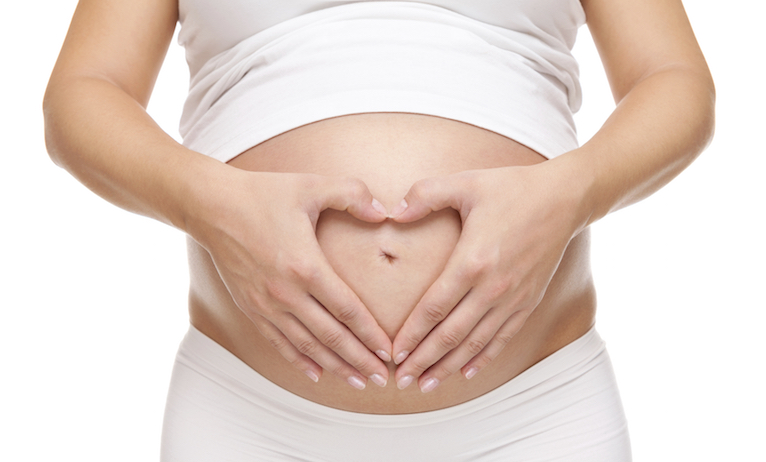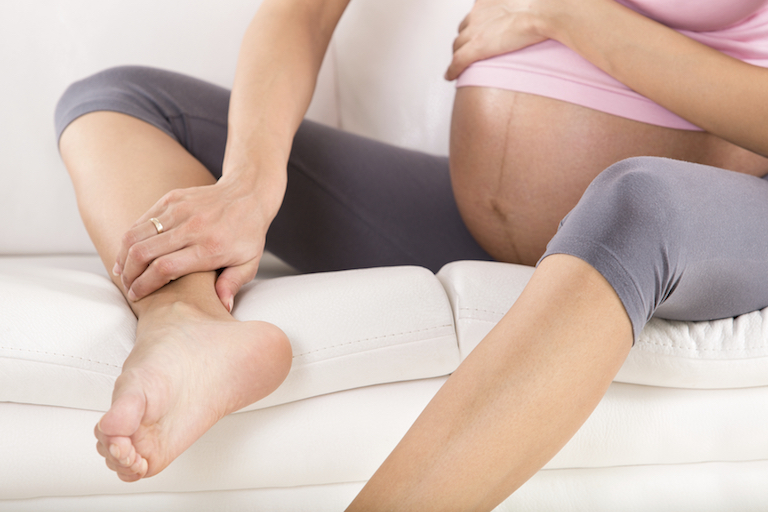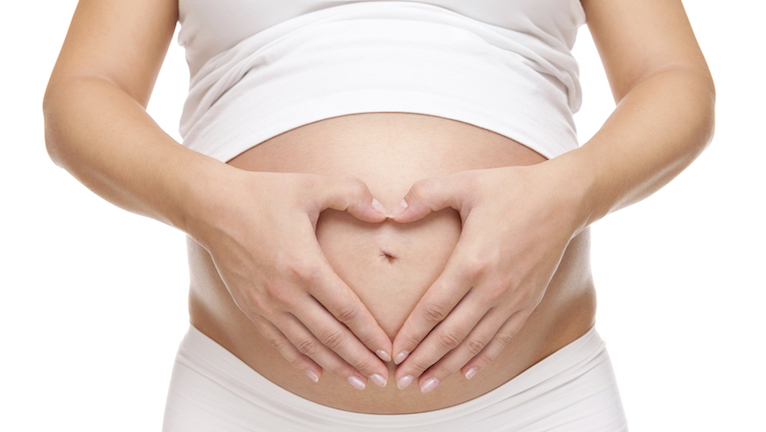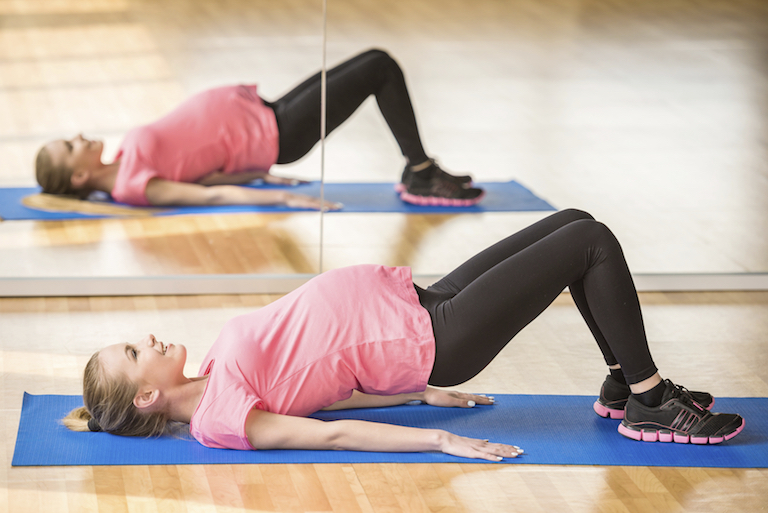Pregnancy is one of life’s milestones that every woman should be able to embrace and learn to love. At first, the changes may seem scary, but Holly McKenzie, a women’s health physiotherapist at Boost Physio has tips to help you feel confident and prepared for your journey towards motherhood
As midwife Ina May Gaskin said; ‘we are the only species of mammals that doubts its capacity to give birth’. It doesn’t have to be that way, pregnancy can be an empowering experience and one of the keys to having a happy pregnancy is to look after yourself really well. If you do that you will reap the rewards before, during and after having your baby.
Pregnancy can be an empowering experience and one of the keys to having a happy pregnancy is to look after yourself really well.

Despite morning sickness and the inevitable aches and pains, including strange physical changes for some, pregnancy is a time to cherish your pregnant body and embrace the changes your body is going through.
Holly Mckenzie, a women’s health physiotherapist at Boost Physio, has got seven tips for you to pregnancy proof your body that will help you feel strong, healthy, confident and ready for the great adventure of becoming a mother.
-
Stay on the move
The idea is to stay fit rather than to reach peak fitness levels. The more active you are the easier it will be to cope with your changing shape and will also help you recover faster from the birth. Whether it is yoga, pilates or an aerobic workout, make sure you check that your preferred exercise is safe and beneficial.
Most aerobic and strength and conditioning exercises are fine. If you haven’t done much exercise up till now start off slowly, get out and walk every day for half an hour at the very least. It goes without saying that it is probably best to avoid sports where you might get kicked in the stomach, like kick boxing, judo or squash. As the bump grows your centre of gravity changes, so you should be extra careful about doing sports when there is a possibility of losing your balance – may be best to leave the downhill skiing or horse riding, skating, skateboarding for after you’ve given birth (like you’ll have time).
The more active you are the easier it will be to cope with your changing shape and will also help you recover faster from the birth.
-
Watch out for pelvic girdle pain (PGP)
One in five women develop PGP during pregnancy. Pelvic girdle pain is when you experience pain around the joints that make up your pelvic girdle. Symptoms include difficulty with walking, pain when standing on one leg, like when you are climbing stairs, putting shoes and socks on, pain when moving your legs apart, like when you are getting in and out of the car or bed, difficulty turning over in bed. Occasionally you will feel clicking and grinding in the pelvic region. The good news is that exercises to retrain and strengthen your stomach, back, pelvic floor and hip muscle will help with managing the symptoms of PGP. If the symptoms persist, try and get a referral to see a women’s health physiotherapist. Fortunately, pelvic girdle pain usually subsides after giving birth.
-
Make sure you do your pelvic floor exercises – every day
One of the biggest gifts you can give yourself during pregnancy is to look after your pelvic floor. One in three women will develop a pelvic floor dysfunction in their life and prevention is better than the cure when it comes to keeping your pelvic floor in good shape. Many women damage their pelvic floor in childbirth, which can have a lifelong negative impact on their continence, confidence and sexual satisfaction. A damaged pelvic floor should not be seen as an inevitable consequence of giving birth. Pelvic floor conditioning and relaxation, including massaging the perineum, especially during the last six to eight weeks of pregnancy, may reduce the likelihood of perineal trauma. A few sessions with a physiotherapist that specialises in women’s health might be a good investment in your pelvic floor during your pregnancy.
MORE: The new gadget that strengthens your pelvic floor and tracks your progress in an app
One of the biggest gifts you can give yourself during pregnancy is to look after your pelvic floor
-
Perfect your pregnancy posture
Your growing curves are beautiful but the one place you don’t want excessive curves is your lower back. Protect your back and pelvis by making sure you have good posture. Back pain is not an inevitable side effect of the weight of your growing belly as other stable joints loosen up to help with the birth and your centre of gravity shifts. So, at risk of sounding like your mother – DON’T SLUMP. Sit up straight, stand with your feet hip width apart and don’t sit or stand for long periods of time. Get up and move around if you are desk bound, take regular breaks, keep moving and try not to cross your legs (if you still can) when you sit. Again pilates and yoga can really help.
Back pain is not an inevitable side effect of the weight of your growing belly as other stable joints loosen up to help with the birth and your centre of gravity shifts
-
Keep those heels low
As your centre of gravity and balance changes it might be a good idea to swap heels for flats or low heels for the time being, especially as you get towards the end of your pregnancy.
6. Beat the swell
Both hands and feet often swell, especially towards the end of pregnancy, and this can be painful as well as make you prone to clumsiness. Swelling in the hands can cause the development of an unfortunate condition called carpal tunnel syndrome, which many women experience. Carpal tunnel syndrome causes tingling, pins and needles or numbness in your fingers or hand, especially your thumb and index, middle or ring fingers, but not your little finger. The best way to manage this condition, which usually disappears after you give birth, is to ice your wrists and then in contrast bathing (going from hot to cold) and keeping your wrist elevated. Certain exercises that your midwife or a physio can show you how to do, and to wear hand sprints, especially at night, can also help.

-
Watch out for “Mummy’s Thumb’
“Mummy’s Thumb” is more common post pregnancy but can happen during pregnancy. The medical name is De Quervains syndrome and it is characterised by pain down the outside of the thumb and wrist. New mums often get “mummy’s thumb” from picking up and putting down their new baby, so the key here is to start building your strength in your hands and arms during pregnancy. If pain is severe you can wear thumb splints and acupuncture works well. For really bad cases a steroid injection might be needed.
Knowledge is power and the more you know about what’s happening to your body the better you can look after yourself.
So, the best way to get through to pregnancy is to learn as much as you can. Knowledge is power and the more you know about what’s happening to your body the better you can look after yourself. One size doesn’t fit all in pregnancy when it comes to fitness and when you are dealing with the inevitable aches and pains that accompany pregnancy it is a good idea to ask an expert so that they can tailor exercises to help you.
You’re creating a tiny miracle and nurturing yourself with healthy eating, lots of rest, appropriate exercise will benefit you and your baby. So enjoy these precious nine months and take good care of yourself so you and your baby can thrive.
MORE: Want to relieve stress? Meet the hormone that can make you feel calmer and look younger
MORE: 10 foods that increase fertility
MORE: 5 ways to preserve your fertility
Holly Mckenzie is physiotherapist and specialist in Women’s Health. She joined Boost Physio in 2014
Like this article? Sign up to our newsletter to get more articles like this delivered straight to your inbox.






















































